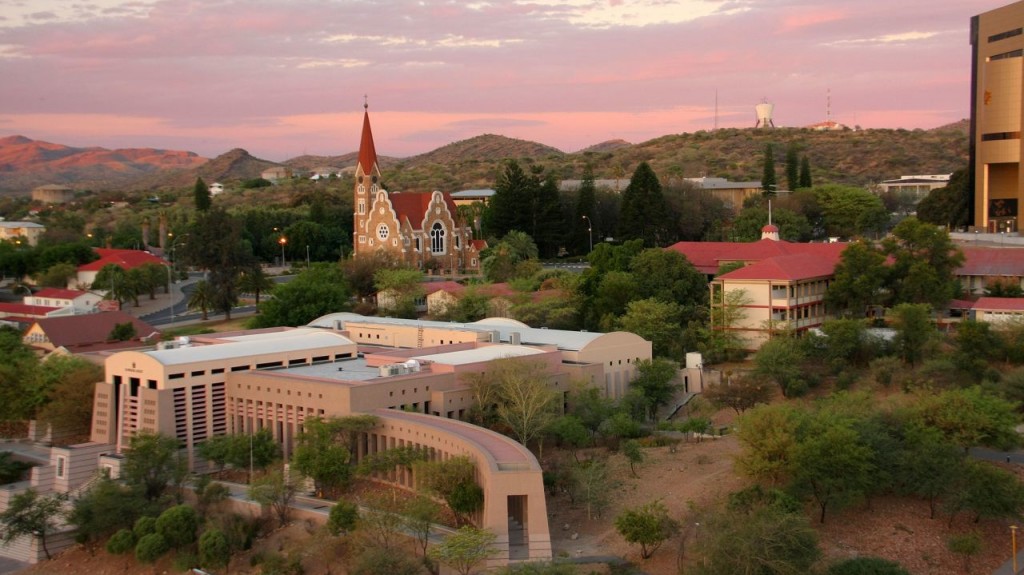As part of a continuing series, ArchitectureRichmond will document the cities that comprise our five active Sister City partnerships, in order to learn more about similar urban environments throughout the world as a point of reference for our own development.
With a population of approximately 330,000, Windhoek is the geographic, political, economic and cultural center of Namibia, its most populous city and capital. First settled on the site of a hot spring, the present-day city was founded by German colonisation in 1890 with the construction of the Alte Feste (Old Fortress) underway, and the building remains as the city’s oldest structure today. German influence is still seen clearly in the urban planning, ethnic makeup, language, and architecture of the city. One German born architect, Wilhelm Sander, is responsible for three iconic castles in Windhoek, incorporating Tudor and medieval elements with regional materials, resulting in quasi-European symbols of power mingling with thick growths of palm trees and desert plains at temperatures often above 100 degrees Fahrenheit.
Development in Windhoek slowed in the first half of the 20th Century, picking up in 1948 with the beginning of apartheid rule and several major civic infrastructural projects. Although surrounded by natural reserves of rolling mountains and very little development outside the city’s borders, its recent expansion to an area of 1,982 sq mi makes it the third largest city in the world, geographically. Despite its size, there is little urbanised area outside Windhoek’s center, with most of the built form exhibiting suburban organisational and density characteristics. The isolation inherent in the urban design of these neighborhoods was exacerbated by the segregative behaviors of apartheid and the residents continue to deal with issues of separation and difficulty of access to the city center. With the current urbanization of Namibia, the city of Windhoek is growing at a quick rate of 4.3% per year, much of the growth occurring in informal settlements in the city’s periphery.
As its population is eclectic, so is its architecture. Various buildings incorporate north African style architecture, seen in the Supreme Court building; Art Nouveau elements, as in Christuskirche; and neo-classicism, seen in the Turnhalle. In addition to stylistic interest, Windhoek boasts several notable efforts of sustainable development, and boasts the first water treatment plant in the world to recycle domestic sewage and reuse it as potable water, built in 1958.
Richmond’s Sister Cities relationship with Windhoek has been less active than other cities since the partnership formed in 1998. Both cities have participated in meetings between representative visits and small exchanges including a fire truck that Richmond donated to Windhoek in 2007. With its fascinating history, unique architecture and expected growth, Richmond and Windhoek should further engage each other as there is much to be learned for both capital cities.
M.F.A


Write a Comment